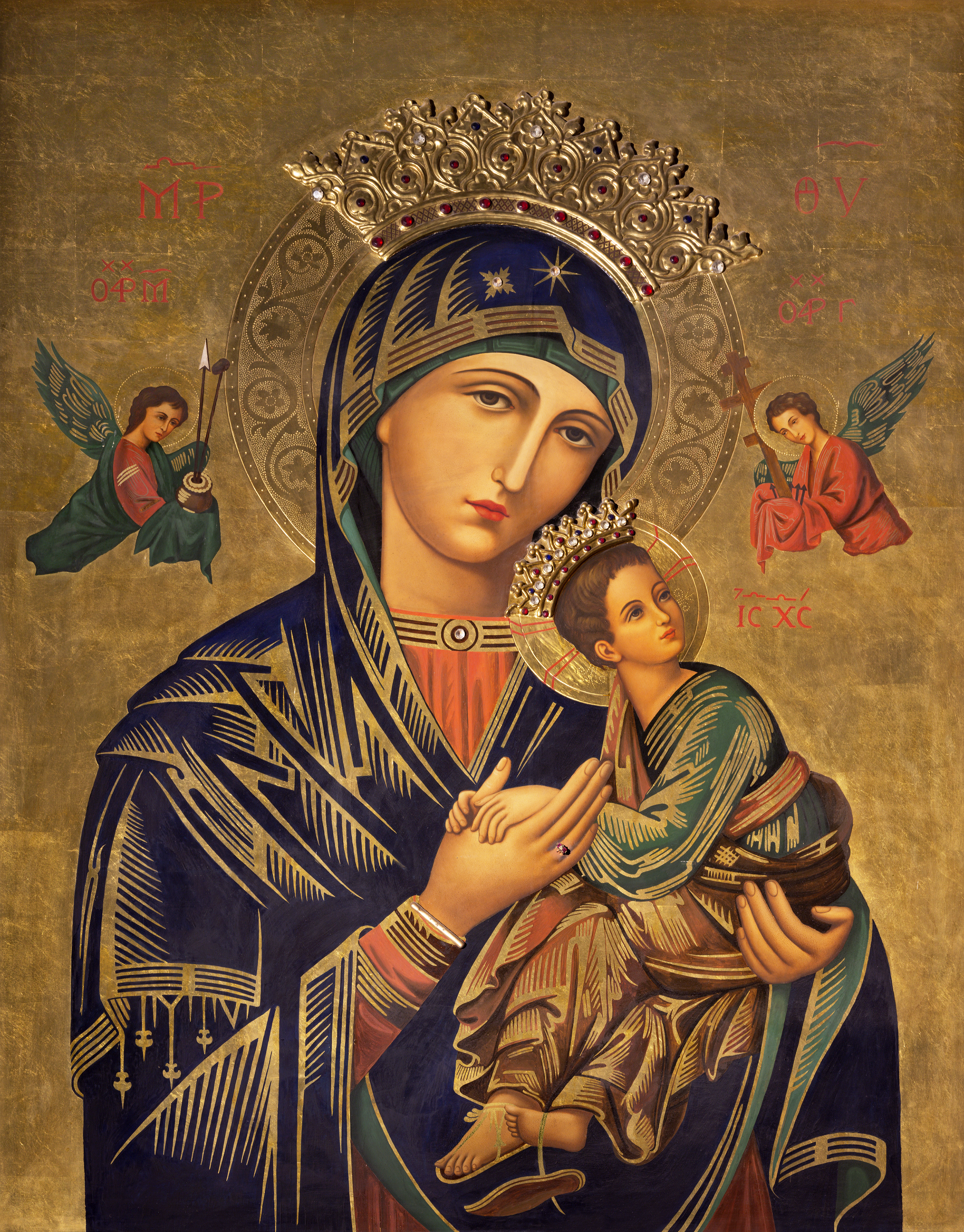(Photo: Our Lady of Perpetual Help, on display in the Church Iglesia Del Perpetuo Socorro by pater Jesus Faus (1953-1959)
Tomorrow is the Feast Day of St. Matthew, one of the Twelve Apostles called by Christ to follow Him and to whom the first Gospel is attributed. As with many saints, there are stories of surprising divine intervention. Here is one involving a titular church dedicated to St. Matthew that played a role in the journey of the Icon of Our Lady of Perpetual Help.
Popular legends claim that the icon is a true copy of a painting that according to legend was painted by St. Luke using the meal table of the Holy Family in Nazareth, and in Eastern orthodox tradition was often identified with the Hodegetria icon, and many consider it to be a miraculous imprint of the Virgin Mary both in the Latin and Orthodox communities. This belief is common in many Hodegetria icons who have similar claims of Lucan legends.
The earliest written account of the image comes from a Latin and Italian plaque placed in the church of San Matteo (St. Matthew) in Via Merulana where it was first venerated by the public in 1499. The writer of the icon is unknown, but according to a parchment attached to the painting that accompanied the icon, it was stolen by a merchant sailing to Rome from the island of Crete. (The Keras Kardiotissas Monastery is regarded as the monastery from which the icon was stolen.) The image remained in the private possession of a Roman merchant and his family until March of 1499. The icon was transferred to the church of San Matteo where it remained for 300 years. The picture was then popularly called the Madonna di San Matteo.
In 1798, French troops occupied Rome as part of the French Revolutionary Wars. Among the several churches demolished during the French occupation was San Matteo in Via Merulana, which housed the icon. The Augustinian friars rescued the icon and first took it to the nearby Church of St. Eusebius and then later set it up on a side altar in the Church of Santa Maria in Posterula.
In January 1855, the Redemptorist priests purchased Villa Caserta in Rome along the Via Merulana and subsequently built the Church of St. Alphonsus Liguori at that location. The Redemptorists were thus established on the Via Merulana, not knowing that it had once been the site of the Church of San Matteo and shrine of the once-famous icon.
For a long while, knowledge of where the icon was located was unknown and it was considered lost until it was discovered hanging in the Church of Santa Maria in 1865 and the Pope ordered it returned to its original home on the Via Merulana. It was brought to St. Alphonsus’ church in 1866 after a great procession throughout the Esquiline region of Rome. Multiple healings were reported by people that called out to the Icon as it passed their homes resulting in crowds of people visiting the shrine and leaving their abandoned crutches and canes behind. Versions of this icon hang in churches all over the world. The one featured above can be found in Zaragoza, Spain.
We will visit the Church of St. Alphonsus Liguori and venerate this icon during our October pilgrimage, Women Saints Through The Centuries this year and in 2020. Join us!
Click HERE for more information about our Women Saints Through the Centuries Pilgrimage or click HERE to view all our upcoming pilgrimages!
Sources:
Apostle of Jesus: https://en.wikipedia.org/wiki/Matthew_the_Apostle
Wikipedia Article: https://en.wikipedia.org/wiki/Our_Lady_of_Perpetual_Help









Leave A Comment
You must be logged in to post a comment.